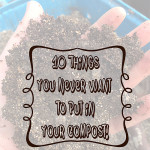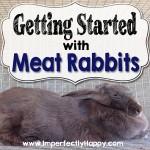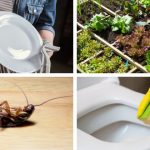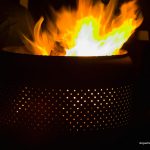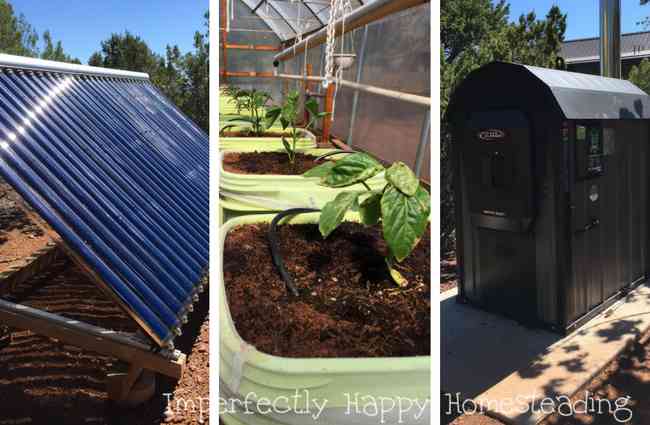 Living off grid on 10 acres… In March I had the privilege of visiting Mystic Pines Farm and I was so impressed with everything I saw that I asked the owners to write a couple of posts for my readers. You may have seen the first one, Getting Started with Alpacas. This time Rob and Donna will be discussing their living off-grid; I think you’ll be impressed.
Living off grid on 10 acres… In March I had the privilege of visiting Mystic Pines Farm and I was so impressed with everything I saw that I asked the owners to write a couple of posts for my readers. You may have seen the first one, Getting Started with Alpacas. This time Rob and Donna will be discussing their living off-grid; I think you’ll be impressed.
Welcome to Mystic Pines Fiber Processing!
In part one of our guest blog, we focused mainly on our alpaca ranch. In part two, we will go into depth about our 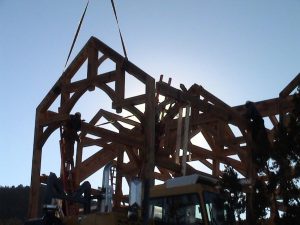 sustainability with a little bit of the fiber mill thrown in. Towards the end of part one, we had just purchased our mill equipment, so we will start from there. But first, we have to turn the clock back to pre-alpaca ownership.
sustainability with a little bit of the fiber mill thrown in. Towards the end of part one, we had just purchased our mill equipment, so we will start from there. But first, we have to turn the clock back to pre-alpaca ownership.
Back in 2006, we started the construction of our timber frame home. We did an incredible amount of research, not only on timber frame homes themselves, but also on sustainability. The three areas of sustainability that were most important to us were rain catch, re-use of grey water, and radiant heating.
Living off Grid on 10 Acres in Northern Arizona
The rain catch was a must as we are in a water haul area. This means you drive to a location, fill up your water tank 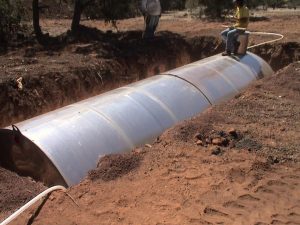 (what ever size it may be), and dump it into a larger tank that you have back at your house. This in turn serves as your domestic water source. You can also have water delivered, but that is at a higher cost. The main problem with both of these scenarios is that we would be dependent on one of two things. First, the place that we go to get water actually has water to sell, and secondly, the delivery truck that brings the water is able to get water and get it to you.
(what ever size it may be), and dump it into a larger tank that you have back at your house. This in turn serves as your domestic water source. You can also have water delivered, but that is at a higher cost. The main problem with both of these scenarios is that we would be dependent on one of two things. First, the place that we go to get water actually has water to sell, and secondly, the delivery truck that brings the water is able to get water and get it to you.
Those two options had too many weak links for us to be comfortable with. Thus, with everything that we have done up to this point, we’ve been required to look at the impact any project would have on our water source. In short, we can hold just about 20,000 gallons on site in underground tanks. For the most part, any rain 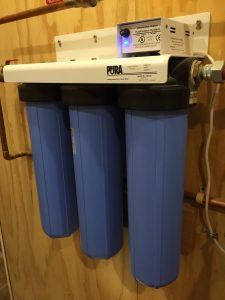 and/or snow we get can pretty much sustain us throughout the year!! We have a whole house filtration system so the rain water is drinkable. Our filtration system consists of a sediment filter, a solid carbon filter, and a UV filter for bacteria. Another benefit to rain water is that it is naturally soft. For scouring fiber in the mill, pH neutral water works best. Here again, rain water fits the bill!!
and/or snow we get can pretty much sustain us throughout the year!! We have a whole house filtration system so the rain water is drinkable. Our filtration system consists of a sediment filter, a solid carbon filter, and a UV filter for bacteria. Another benefit to rain water is that it is naturally soft. For scouring fiber in the mill, pH neutral water works best. Here again, rain water fits the bill!!
To this end, we installed a metal roof on our house, barn and mill. The house and mill flow into a 10,000 gallon tank with a 2,500 gallon over flow tank. Our barn has a 5,000 gallon tank which is used for the alpaca and the greenhouse. We have an additional 750 gallons off of our garage which we can use for garden irrigation in the spring, summer and fall.
Next, we plumbed the house so that we are able to divert all grey water for irrigation. This simply required two drain lines out of the house; one to the septic system for black water, and one out to the garden area. We also incorporated a diversion valve to divert the grey water into the septic tank during the winter when irrigation is not required.
The heating portion of the house was hands down radiant floor from the start with a high efficient fireplace. When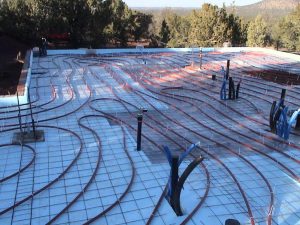 we first got the system up and running we installed a 32-tube evacuated tube ground mounted solar system. This system more than gave us enough heat for the house as well as for heating our domestic hot water. At night, we relied on the fireplace. We also initially installed an electric flash hot water heater which worked as a backup for our radiant system. This was run as little as possible due to the fact it was very expensive to run!!
we first got the system up and running we installed a 32-tube evacuated tube ground mounted solar system. This system more than gave us enough heat for the house as well as for heating our domestic hot water. At night, we relied on the fireplace. We also initially installed an electric flash hot water heater which worked as a backup for our radiant system. This was run as little as possible due to the fact it was very expensive to run!!
Fast forward about four years. We were in the process of planning the mill and so anything we could do to trim our overhead cost was on the table!! Washing wool fiber requires a minimum of 140 degree water to remove the lanolin. An electric hot water heater would have added probably a minimum of $500 a month to the electric bill, in addition to the cost of running the equipment in the mill!! Also, given the size of the building, 40 x 60, heating it during the winter would have been quite a cost to contend with!!
So, to heat the house, the mill, and all of our hot water, we added a wood gasification boiler in conjunction with the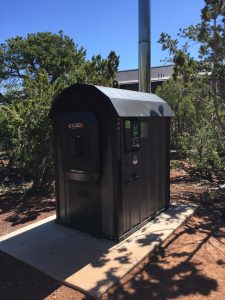 evacuated tube system. This allowed us to wash the fiber at the required 140+ degrees, and have plenty of domestic hot water in the house as well. We purchase logs from the forest thinning projects in the area, and cut them up and split the wood. We burn on average 20 to 25 cords of wood per year. This greatly reduces our heating costs and helps hold the overhead costs down in the mill!!
evacuated tube system. This allowed us to wash the fiber at the required 140+ degrees, and have plenty of domestic hot water in the house as well. We purchase logs from the forest thinning projects in the area, and cut them up and split the wood. We burn on average 20 to 25 cords of wood per year. This greatly reduces our heating costs and helps hold the overhead costs down in the mill!!
The fiber mill has now become a source of a second income for us. The response has been overwhelming since starting the fiber mill four years ago. It has been a steep learning curve but we seem to improve our efficiency and production in the mill every year that goes by!!
One thing that we hear often is that most people assume the cost of sustainability, of this nature, must cost an arm and a leg!! Several questions that we have always asked ourselves, when taking on these larger projects, is how much of this can we do ourselves to save on costs and what will the pay back be? Without hesitation, we can honestly say, any steps that we have taken with our heating sources have more than paid for themselves!! The initial cash outlay, in most cases, was more than the conventional way of accomplishing what we set out to do, but the pay off was quick and now we are less dependent on fluctuating fuel costs!!
For the most part, our rain catch system has sustained us with most of the water that we need. Considering we can 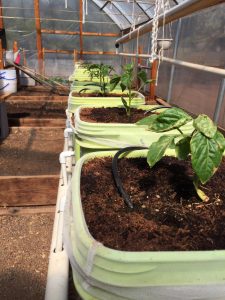 irrigate our gardens, water our animals, wash fiber in the mill, and have enough for our domestic water supply isn’t too bad considering, at best, we probably receive 12” to 15″ of rain a year. Here again, the initial cost was more than the conventional method, but again we have a reliable source of water to sustain us!!
irrigate our gardens, water our animals, wash fiber in the mill, and have enough for our domestic water supply isn’t too bad considering, at best, we probably receive 12” to 15″ of rain a year. Here again, the initial cost was more than the conventional method, but again we have a reliable source of water to sustain us!!
We have looked at doing photo voltaic many times. It would be great to be completely off the grid but our justification of the cost of putting in such a system and then waiting many years for it to pay itself off just doesn’t seem practical at this point!!
So in a nut shell this is how Mystic Pines Alpacas and Mystic Pines Fiber Processing has come to be. It has been a long process with its ups and downs but the life style can’t be beat!
For additional information on our alpacas and mill, or to book a tour of our operation, please visit our website at www.mysticpinesfiber.com.

